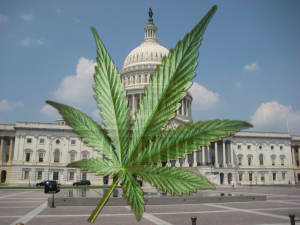 The Vox website published this overview of issues around the legalization of cannabis. It’s a complicated discussion that’s taking place right now in States around the country. Definitely worth a read.
The Vox website published this overview of issues around the legalization of cannabis. It’s a complicated discussion that’s taking place right now in States around the country. Definitely worth a read.
I’ve always wondered why the legalization of cannabis is portrayed as a black-and-white contest between polar opposites. It isn’t.
Last I looked, there were somewhere between eight and twelve million Americans who characterized themselves as daily users. That’s in spite of laws designed to prevent that. Just the simple fact suggests we’re well behind the expiration date for a straightforward ban. And polls consistently indicate a lack of public support for prohibition. That makes effective enforcement difficult or even impossible.
On the other hand, we should be considering research about the adverse effects and consequences of a significant increase in marijuana users. It’s almost as if the general public has forgotten that cannabis, like any mind-altering substance, will have its downside.
It’s just the way these things work.
Most folks I’ve met in the treatment field have never been in favor of criminal penalties for marijuana use. It seems excessive, given the nature of the drug. If someone is experiencing problems with pot, fine, get them help. But locking them up? Feels like smashing a bedbug with a sledgehammer.
Don’t forget that all through the decades-long dispute over marijuana, counselors have been treating people for problems related to pot use — sometimes as the primary problem, other times in a mixed picture with other substances. It’s a common phenomenon in addictions, and frequently a factor in relapse to more dangerous drugs. So it’s silly to make blanket pronouncements about cannabis as safe to people who see evidence that it isn’t always safe. Sure, it’s less dangerous than alcohol or opioids, but is that now the gold standard? You’re still alive?
It’s reasonable to project that 10% of regular cannabis users will develop what DSM5 refers to as a cannabis use disorder (CUD), of varying severity. Given what legalization would do to the raw numbers, that’s a very large population indeed. What are we doing to prepare for them?
A colleague asked a counselor at a Colorado methadone program what it was like to work with clients, post-legalization. Her comment: “it sucks.” Apparently folks showed up stoned at therapy sessions, barely able to follow the discussion, let alone gain much insight. They were still on methadone, of course, and probably drinking on the side. They’d just added pot to the daily mix.
Motivation for change? Not much.
Also, what about the proliferation of cannabis oil products for use with vape pens and other devices? What will the THC content of those eventually be? I’m guessing it will increase in potency. You move product by making it stronger, not weaker.
We in treatment will strive to develop new protocols and strategies for addressing new problems. We just aren’t 100% sure what form they will take.










